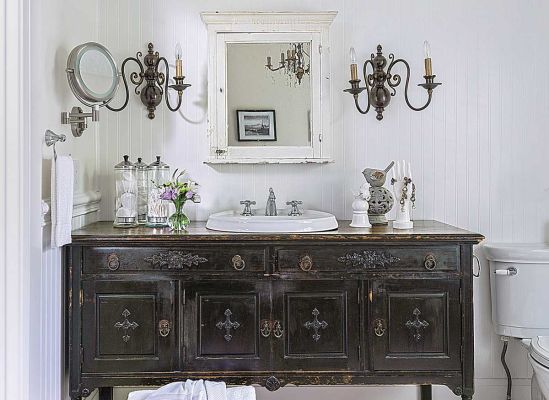“Thinking it’s time to get some new patio furniture? Learn how to care for and protect it for years of enjoyment.”
Denise Buck & Ed Johnson – DC Metro Realty Team
After a few seasons of exposure to the elements, your patio furnishings may start showing their age. Most outdoor fabrics and finishes are tough enough to stand up to the wear and tear of many sunny days and stormy nights, but regular maintenance can go a long way toward extending their lifespan. Here are some quick tips on how to protect your outdoor furniture.
Before You Get Started
Familiarize yourself with your furniture’s care guidelines. The manufacturer’s instructions will usually specify which cleaning solutions to use and which ones to avoid. Applying the wrong products or cleaning using improper methods could damage your furnishings and void any existing warranties.
Wicker Furniture
Wicker will fade and crack if exposed to too much harsh sunlight. Cover your wicker furniture when not in use. Covering also helps prevent mildew from working its way into the cracks and crevices between individual wicker fibers.
When cleaning wicker, avoid harsh or abrasive treatments. A mixture of water and mild soap is best. Apply sparingly — do not soak wicker. Rinse and wipe dry with a clean, lint-free cloth. If necessary, vacuum the wicker first with a brush attachment to remove large debris and loose dirt.
Wood Furniture
Seal your wood patio furniture. The sun’s ultraviolet (UV) rays can discolor wood and weaken its integrity. A coat of sealant will also make the wood more resistant to moisture. Sealants and stains must typically be reapplied every one to three years of outdoor use.
When sealing (or resealing) wood, first clean it. Dissolve the manufacture’s recommended amount of powdered oxygen bleach in one gallon of hot water. Do not use chlorine bleach on wooden surfaces. Apply and scrub any areas affected by mildew with a soft-bristle brush. Rinse with clean water and dry thoroughly. Finally, apply a clear, water-repellent sealant or a penetrating semitransparent wood stain. If desired, you can purchase a sealant (or stain) containing a mildewcide or mix in a mold- and mildew-resistant additive of your own.
Metal Furniture
Clean metal surfaces with a simple, mild soap-and-water solution. To restore your metal furniture’s luster, take a lint-free cloth and buff it with auto wax (paste or liquid). Lubricate any stiff or creaky moving parts — such as casters, swivels, glides and umbrella mechanisms — using a silicone spray.
If your metal furniture is showing signs of rust or mold, use a fine-grit sandpaper to sand any problem areas. Touch-up with matching paint, applying it in several thin layers. Let each coat dry completely before applying the next.
Weatherproof Outdoor Furniture
Now that your outdoor furniture is spick and span, you can keep it looking that way longer by applying an outdoor furniture protector specially formulated for your type of furniture (wicker, wood, vinyl, metal, etc.). Some protectors can be sprayed on, while others will need to be applied with a brush. Look for protectors that are both water-repellent and UV-resistant. Apply thoroughly, but be sure to work in a well-ventilated area while wearing the proper safety equipment: goggles, gloves and a dust mask or respirator.
Protect The Upholstery
Spot cleaning is the best method for cleaning outdoor upholstery. Use a mild detergent diluted in cold water and attack any stain using a sponge rather than a brush. Try to avoid soaking the cushions and allow them to air dry completely. Mildew loves moisture. If you store your cushions during those portions of the year when you seldom enjoy your patio, avoid using plastic bags. Try wrapping them in an old bed sheet or a canvas painter’s tarp. The fabric should be able to breathe even if it has been moved to an outdoor storage bin or shed.
Finally, to combat fading and discoloration caused by the sun’s UV rays, apply a fabric protector to your upholstery at the beginning of the warm weather season.
Store It Carefully
Cover your patio furnishings in waterproof furniture covers when not in use and especially when inclement weather threatens. To prevent your patio from becoming a place where standing water might accumulate, remove your furniture’s foot caps and keep all items upright in order to facilitate proper drainage.
Originally Published by American Home Sheild










 Photo by: American Home Shield
Photo by: American Home Shield